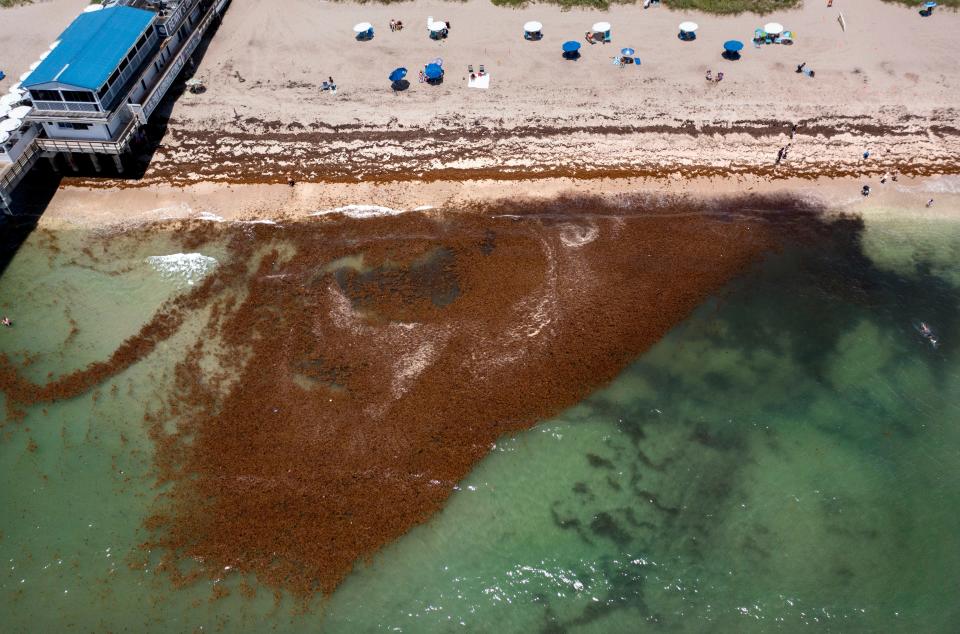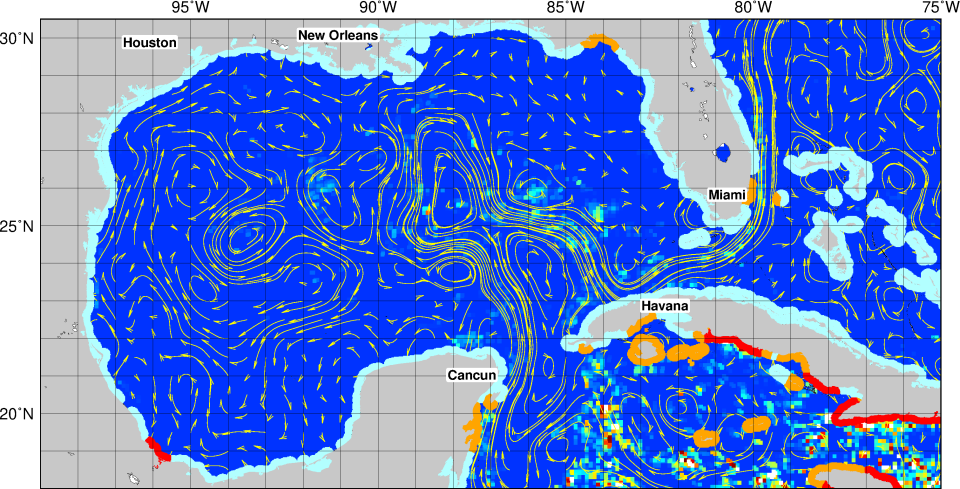Beaches are clearing up as sargassum blobs disappear. What this means for Southwest Florida
The months-long threat of sargassum may be clearing up in time for summer.
Inside the June report from the University of South Florida, scientists have noticed a sharp decline in the seaweed that's been plaguing Florida coasts since March and predict the trend to only continue in the coming months.
The amount of sargassum in the Gulf of Mexico not only decreased in June, but the drop exceeded expectations, according to the report. 75% of the seaweed disappeared last month, which is good news for Southwest Florida residents and visitors.
The decreasing amounts of reported sargassum are expected to continue over the next two to three months, with sargassum aggregations in the central west Atlantic continuing to move west with prevailing currents and winds.
June sargassum report broken down: Sargassum drop 'beyond expectation' in Gulf of Mexico, Caribbean. Where will it be in July?
What is sargassum?
Sargassum is a species of large brown seaweed, a type of macroalgae that floats in large masses. On some beaches in Florida, the "blobs" of crunchy, dry, brown stinky seaweed are fairly large.
Quick facts on the stinky seaweed:
In the water, sargassum is considered harmless to people.
On land, sargassum begins to rot and produces smelly hydrogen sulfide and ammonia, which can irritate eyes, ears, and noses.
The large floating blobs of sargassum can provide food, refuge, and breeding grounds for a variety of animals such as fish, sea turtles, marine birds, crabs, shrimp, and more. Some animals, like the sargassum fish, live their entire lives only within this habitat.
Their pneumatocysts add buoyancy, allowing them to float on the surface, often in large clusters or "blobs" that can sometimes stretch for miles across the ocean.
What caused the spike in sargassum back in spring?
The Great Atlantic Sargassum Belt stretched 5,000 miles from the west coast of Africa to the Gulf of Mexico. It is critical to the ocean's ecosystem and travels from a place called the Sargasso Sea in the North Central Atlantic every year.

As mats of seaweed broke off from the belt and headed straight toward Florida's various coasts, many depicted the seaweed as "a blob" causing harm. Experts later came out to clear the air on what was happening.
“I think the hysteria started when people started calling it a ‘blob.’ That invokes this horror story that was this movie way back when,” Barry Rosen, an aquatic biologist at FGCU’s The Water School, explained to WUSF back in March. “It is not a blob. It is a mass of living organisms pumping oxygen into the air. It's a very nice ecosystem, and it typically doesn't cause a problem."
Will the surplus of sargassum be decreasing soon?
The June report from the University of South Florida details trends of sargassum decreasing over the next two to three months. By the end of June, there was very little sargassum found in:
Gulf of Mexico
Western Caribbean Sea
Straits of Florida
Along the East Coast of Florida
Overall, the amount of sargassum quantity in the Great Atlantic Sargassum Belt, which extends from West Africa to the Gulf of Mexico, in June decreased slightly since May.

The decrease was attributed to substantial decreases in the seaweed in the Gulf of Mexico and the Caribbean Sea. However, there was an increase in the Central West Atlantic.
Because of the continued decrease of sargassum in the Gulf of Mexico and the Caribbean Sea, researchers predict the sargassum amount in the Gulf of Mexico will remain minimal.
Are Southwest Florida beaches free of sargassum yet?
The trend of decreasing amounts of sargassum being reported is expected to continue over the next two to three months, which should be good news to not just Southwest Florida residents, but those living throughout Florida's coastlines, according to the University of South Florida.
Currently, beach cams in Fort Myers Beach and Naples show clear shorelines with little to no sargassum.
It is noted that 'Seaweed Season' just ended, which tends to appear on Florida beaches in the spring, with a peak in June.
Planning to spend some time at the beach but want to check out the latest conditions? Here are several webcams throughout the entire state.
Beach webcams: Florida beach live webcams show surf, waves, sargassum seaweed conditions
See conditions: Florida beach live webcams show surf, waves, sargassum seaweed conditions
Will Southwest Florida ever see this level of sargassum again?
In an interview with NBC Miami on sargassum, USF Professor Dr. Chuanmin Hu said it is too soon to tell if South Florida will ever see this amount of sargassum again, especially since it's incredibly difficult to predict.
"Many factors impact future cycles," Dr. Hu said. "But what I can say for the next couple of months, for this sargassum season, is most of the time, the beaches will be spared by large amounts, although some beaches may still see some small amounts here and there. That doesn't mean anything. The sargassum season is gone."
Read the full June Sargassum report:
This article originally appeared on Fort Myers News-Press: Sargassum will soon be cleared from Southwest Florida coasts

